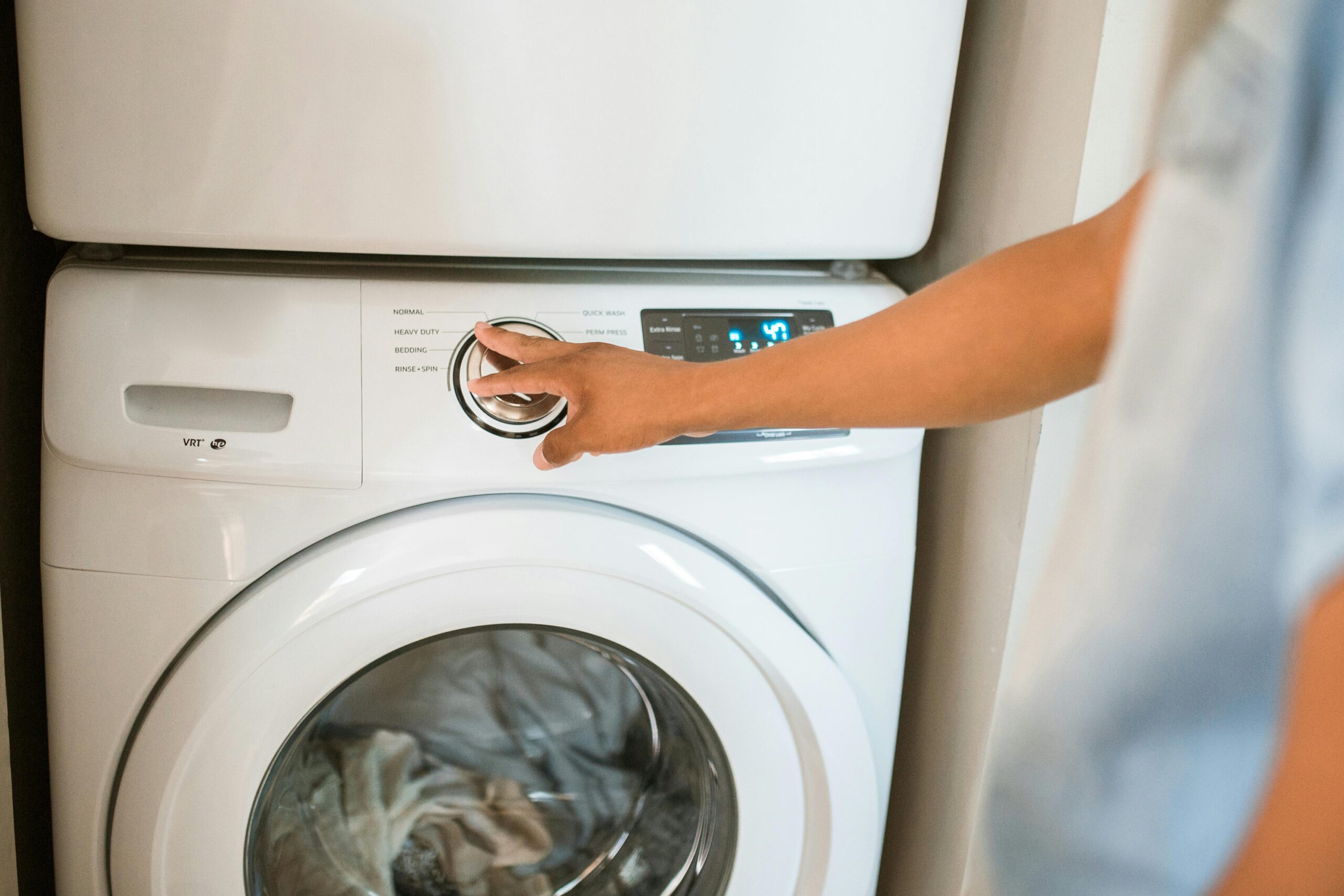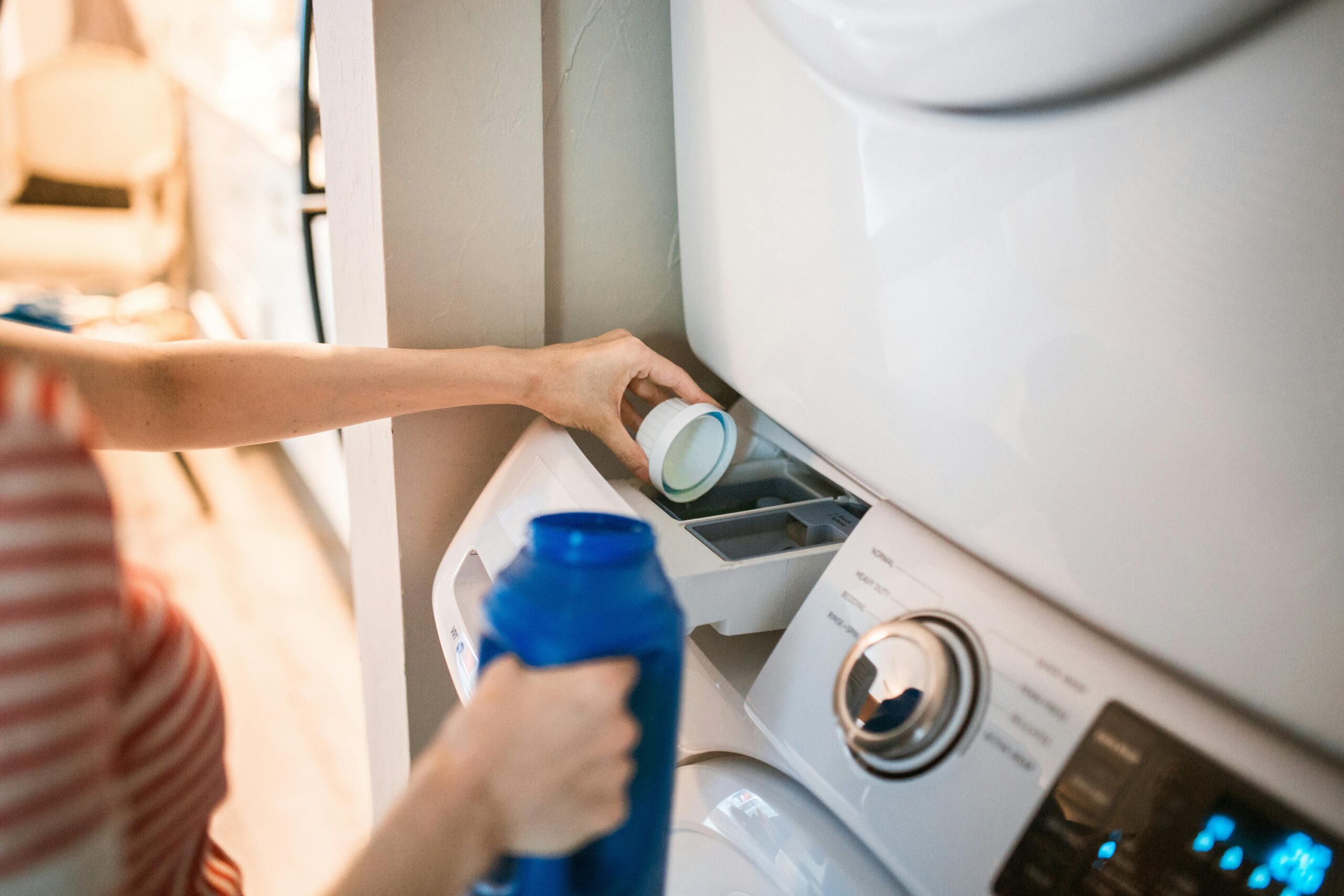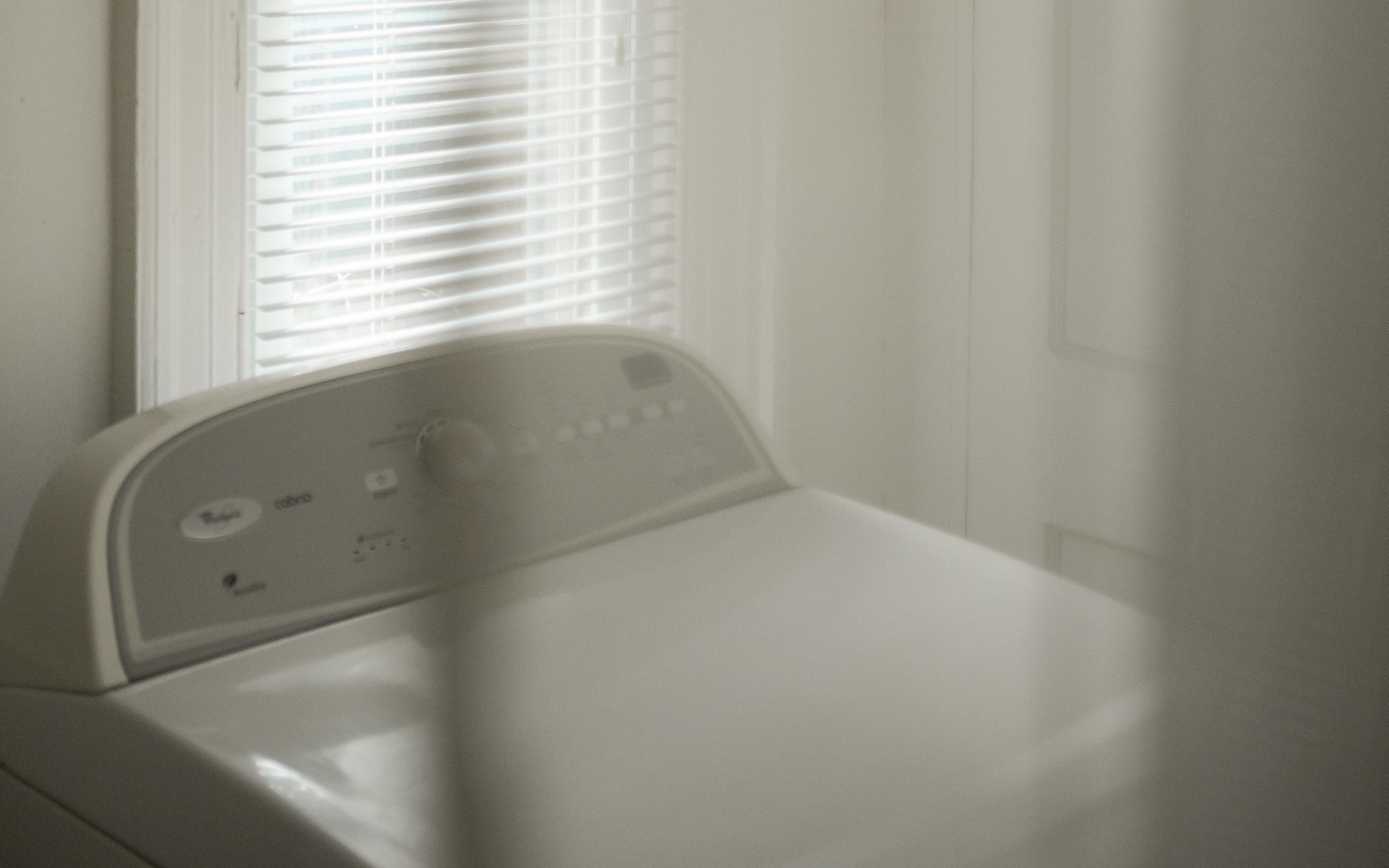You clean your sheets, but your washer might be dirtier than you think. Here’s how to clean it the easy, non-toxic way.
I’ll admit, I had no idea I was supposed to clean my washing machine until I saw a TikTok video showing someone deep-cleaning theirs. It sent me down a rabbit hole of “deep clean with me” posts with people discovering a bizarre mix of mystery debris—a lost sock, leaves, and even a spaghetti noodle. Naturally, I called my mom to ask if she cleans hers, to which she replied, “What? I’ve never ever done that.”
Unfortunately, just because our washers clean our clothes, towels, and bedding doesn’t mean they’re cleaning themselves. And if you’ve never given yours a proper scrub, it’s safe to assume your laundry isn’t as fresh as it should be, which isn’t ideal when you’re trying to create a healthy sleep environment. There’s probably a lot building up inside—soap scum, hard water minerals, mildew, maybe even mold. Are you cringing yet? I am.
Cleaning your washing machine—and yes, your dryer too—helps your appliances last longer, improves energy efficiency, and keeps your favorite sheets, pillowcases, and duvet cover in better shape so you don’t have to replace them as often. It’s a small but meaningful task for clean laundry that feels good on your skin.

Read more: How often should you wash your sheets and bedding?
What happens if you don’t clean your washing machine?
Dirt, detergent, and bacteria can build up in your washer instead of being flushed away through the pipes, making your laundry come out looking (and smelling) a little questionable. You might also notice skin irritation or allergy flare-ups that are hard to trace. And when sweat, oils, and dirt don’t fully wash away, it’ll break down and wear out your fabrics faster, causing them to lose their softness.
Many of us wash laundry in cold water to save energy, avoid shrinkage, and be more gentle on the planet—all good things. But cold water alone isn’t enough to kill bacteria or flush out trapped grime, especially if your appliances aren’t getting the occasional deep clean they need to do their job.
Read more: How to do your laundry more sustainably
I’ve had my washer for years and have never cleaned it. Is it too late?
If everything seems to be running smoothly, you’re probably in the clear! But if you’ve never cleaned it, it might take more than a quick rinse and wipe down.
Give your washer and dryer a once-over and see if they could use a deeper refresh. If you’re thinking, “This feels like more than I can handle,” consider calling in a professional. And if you’ve started regular cleanings but lingering odors or mildew still stick around after a few rounds, that’s another sign it might be time for expert help.
How often should you clean your washer?
As a general rule of thumb, try to clean your washer once a month, or every 30 loads. If you’re running two to three loads a week, that means you’re on track to clean it every three months or so.
At the very least, do a deep clean every six months. I like to add all cleaning tasks as recurring reminders in my calendar so I don’t have to rely on my memory to remember.
Supplies You’ll Need
- White distilled vinegar or eco-friendly washing machine tablets
- Baking soda
- Natural, all-purpose cleaner spray
- Microfiber cloth or another reusable option
- Spray bottle
For some washers, vinegar can damage the rubber seals and hoses if not rinsed thoroughly. So, before using any cleaning agents, check your specific model’s manual to ensure they’re safe for you to use. The manufacturer will know best and may include cleaning instructions as well.

Read more: A guide to those weird laundry symbols
How to clean your washer (front-loading & top-loading)
1. Clean the door’s rubber seal (front-loading only)
For front-loaders, the gasket around the door traps moisture, detergent, and grime, making it a prime spot for mold and mildew to grow. Mix equal parts distilled white vinegar and water in a spray bottle, spritz the gasket, and let it sit for a minute. Then wipe it down with a cloth, paying close attention to the folds where buildup tends to hide.
2. Run an empty cleaning cycle
For both front- and top-loaders, start by running an empty cycle with two cups of white distilled vinegar in the detergent dispenser. If your top-loader doesn’t have a dispenser, add the vinegar or a cleaning tablet directly to the drum of your machine.Then, run it on the hottest, longest wash cycle.
3. Run a second cycle with baking soda
Next, pour ½ cup of baking soda directly into the drum and run another hot cycle to deodorize your washer. You’ll want to run this cycle separately from the vinegar one because mixing the two can cancel each other out.
4. Clean the detergent compartment
If your washer has one, remove the drawer, soak it in warm water, and scrub it with a small brush. Rinse and dry it thoroughly before putting it back in place. If your washer has built-in detergent compartments, spray them with the vinegar and water mix, scrub away the gunk, and wipe it down to dry.
5. Clean the agitator (top-loading only)
If your top-loader has an agitator, wipe it down with a cloth, including the inside of the cap, if there is one. For stubborn spots, scrub with a toothbrush and the vinegar and water mixture to keep it clean and prevent grime buildup.
6. Clear out any leftover residue
Check the drum, lid, and surrounding crevices for any lingering dirt. Use a damp cloth to clean those areas thoroughly, and consider running a rinse-and-spin cycle to flush everything out one more time, if needed. Then, spritz the exterior with your all-purpose spray and give it a final once-over with a clean cloth.
7. Dry the interior
After cleaning, leave the door open to air out the washer and prevent mold or mildew growth. This is a also good final step for after you’ve finished your last load on laundry day.
How to clean your dryer
Your washing machine isn’t the only laundry appliance that needs regular cleaning. Show your dryer some TLC too.
1. Clean the lint trap (after every use)
Remove the lint screen and clear out any lint. It’s a quick step that keeps your dryer running efficiently. Then, about once a month, give the screen a deeper clean by washing it with warm, soapy water to remove fuzzies that can block airflow.
2. Wipe down the drum
Use a damp cloth with white distilled vinegar or a mild, eco-friendly cleaner. For stubborn spots, mix baking soda and water into a paste, scrub gently, and wipe clean with a damp cloth. To minimize residue on your laundry and inside your dryer, we recommend using reusable wool dryer balls instead of dryer sheets.
3. Check the moisture sensor (monthly)
The moisture sensor helps your dryer detect when clothes are dry, but it can get coated in residue over time. Locate the sensor—usually near the lint trap or along the drum—and wipe it down to keep it working properly.
4. Deep clean the dryer vent (every 3-6 months)
If your laundry is taking longer than usual to dry, your vent may be clogged. Cleaning it can improve efficiency, save energy, and reduce fire risk. Unplug the dryer and move it away from the wall. Detach the vent hose and use a vacuum attachment or vent brush to remove trapped lint. If accessible, check the outdoor vent opening and clear away blockages like lint, debris, or even bird nests.
5. Clean the exterior and surroundings
Spritz the outside of the dryer with your all-purpose cleaner spray and wipe it down with a cloth. Then sweep or vacuum around and behind the machine to remove hidden lint, dust, and dirt. Built-up lint isn’t just messy; it’s also a fire hazard.
With these simple steps, you can keep your washing machine and dryer in tip-top shape so they actually make your soft, cozy bedding clean and safe to sleep under.

Read More: How to wash pillows & keep them fresh
Have feedback on our story? Email [email protected] to let us know what you think!

Shop Pillows
The Essential Organic Pillow Collection
Gentle, breathable, non-toxic support.







